Dangal is a traditional wrestling competition that originated in India. Watch the 2016 Bollywood biographical drama by Nitesh Tiwari and you’ll know what it’s about. With ancient roots, it has evolved into modern-day Kushti, a sport that requires strength, agility, and a strong mind (of loincloth-wearing wrestlers). Played on soil, in a circular pit, spectating is an immersive multi-sensorial experience.
If you're looking for something with a twist while exploring India, then learning about Kushti (in person) could be ideal.
This article will review the history of Kushti, its status in India today, how wrestlers train and where to experience it in various parts of the country.
What is Kushti
Kushti is a traditional style of Indian wrestling that involves two wrestlers grappling and trying to pin each other down on a clay pit called an "Akhara". The sport emphasises physical strength, endurance, and technique, as well as discipline and mental resilience.
History of Kushti
Kushti has a rich history dating to ancient times when it was popular among kings and princes. It was used to train soldiers for battle, given it requires strength of mind and body. It also played a significant role in the Indian Olympic Games (between 1924 and 1936).
Current Status of Kushti in India
Today, it’s still a popular sport, especially in the northern states of Delhi, Uttar Pradesh, Haryana and Punjab. With a strong cultural heritage, having been passed down through the generations, it’s become deeply ingrained in India’s cultural fabric. For those with talent (both men and women), it can lead to career opportunities, the cream of the crop becoming professional wrestlers, coaches and even actors.
Kushti in Delhi
My Experience
On a chilly winter day in Delhi, I find myself among the crowds gathered around the outdoor arena of the Dangal competition. The air is thick with the heady scent of sandalwood and mustard oil as the young wrestlers, mostly boys with a few men among them, prepare to compete. The colourful costumes of the wrestlers stand out against the drab surroundings, their red and orange langots (loincloths) catching my eye.
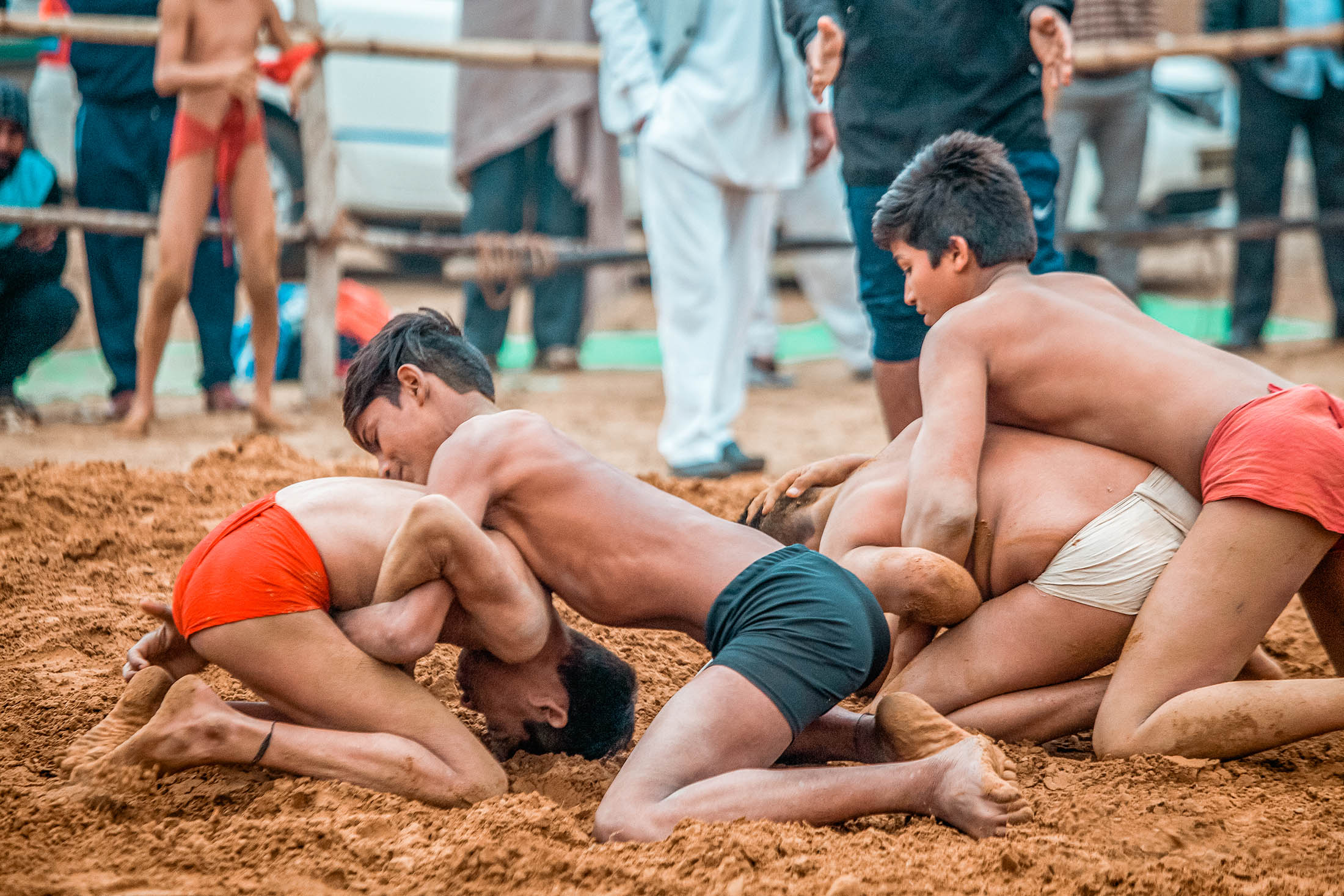
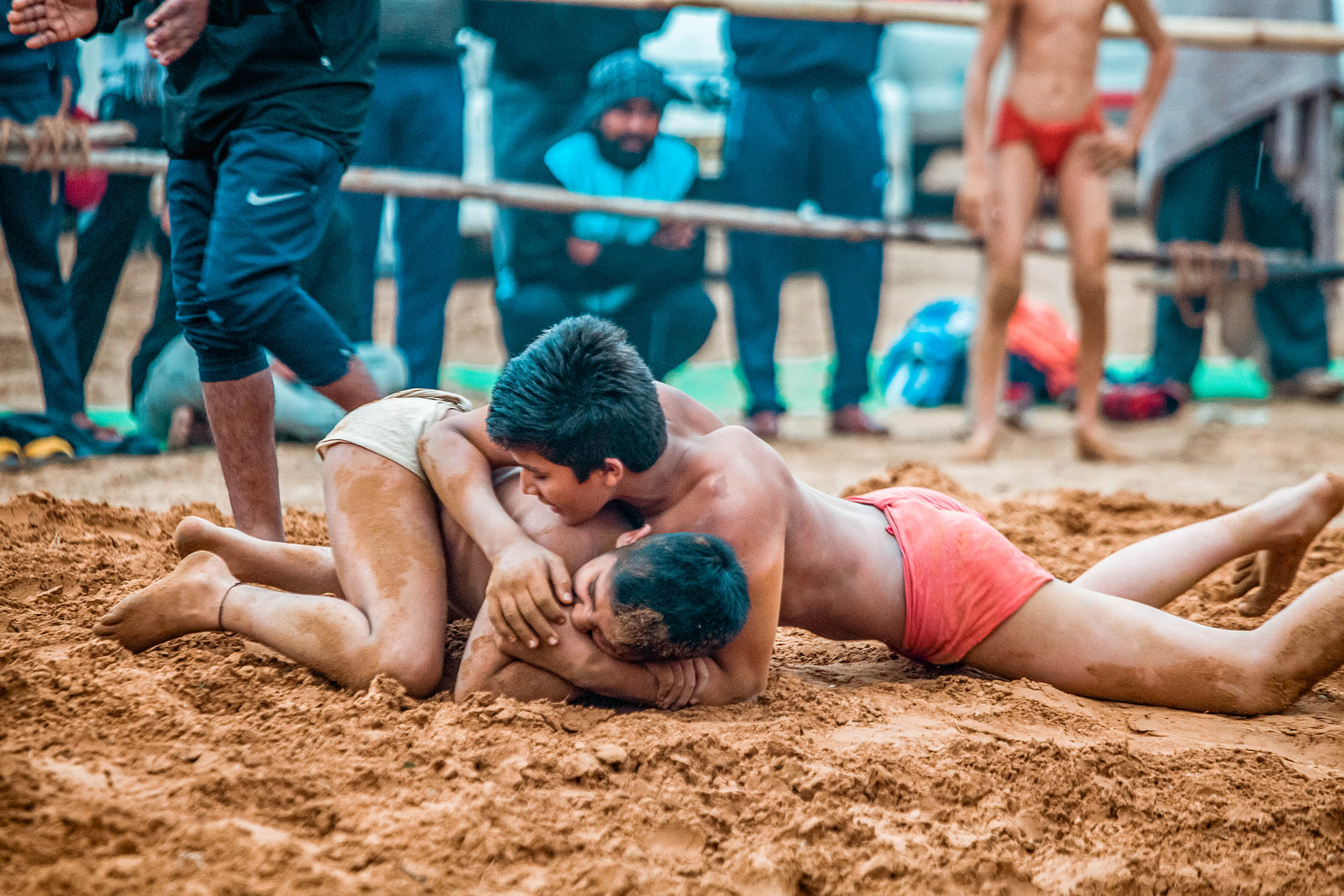
As the wrestlers begin to move, the crowd roars to life. The sound of the referee's whistle cuts through the air, signalling the start of the match. The wrestlers' movements are swift, their bodies twisting and turning as they try to gain the upper hand. With each intimate touch and grapple, they push themselves to the limit, their muscles straining against each other in a show of strength and skill.
As the match comes to an end, they bow to each other in a sign of respect, and the officials step in to declare the winner. The Dangal, to me, has highlighted the camaraderie and brotherhood that binds them together.
Akharas in Delhi
Delhi is one of the best places to experience Kushti. The capital city is home to several Akharas, where you can watch and even participate in the sport. The famous Hanuman and Chhatrasal Akhara are known for their world-class training facilities.
Kushti in Varanasi
My Experience
On a warm winter day in Varanasi, I come across a chiselled man changing his langot on the shores of the Ganges after a morning bathe. His toned body glistens in the sunlight. He flashes a friendly smile and strikes a pose for the camera. I'm struck by the way he enjoys showing off his impressive physique.
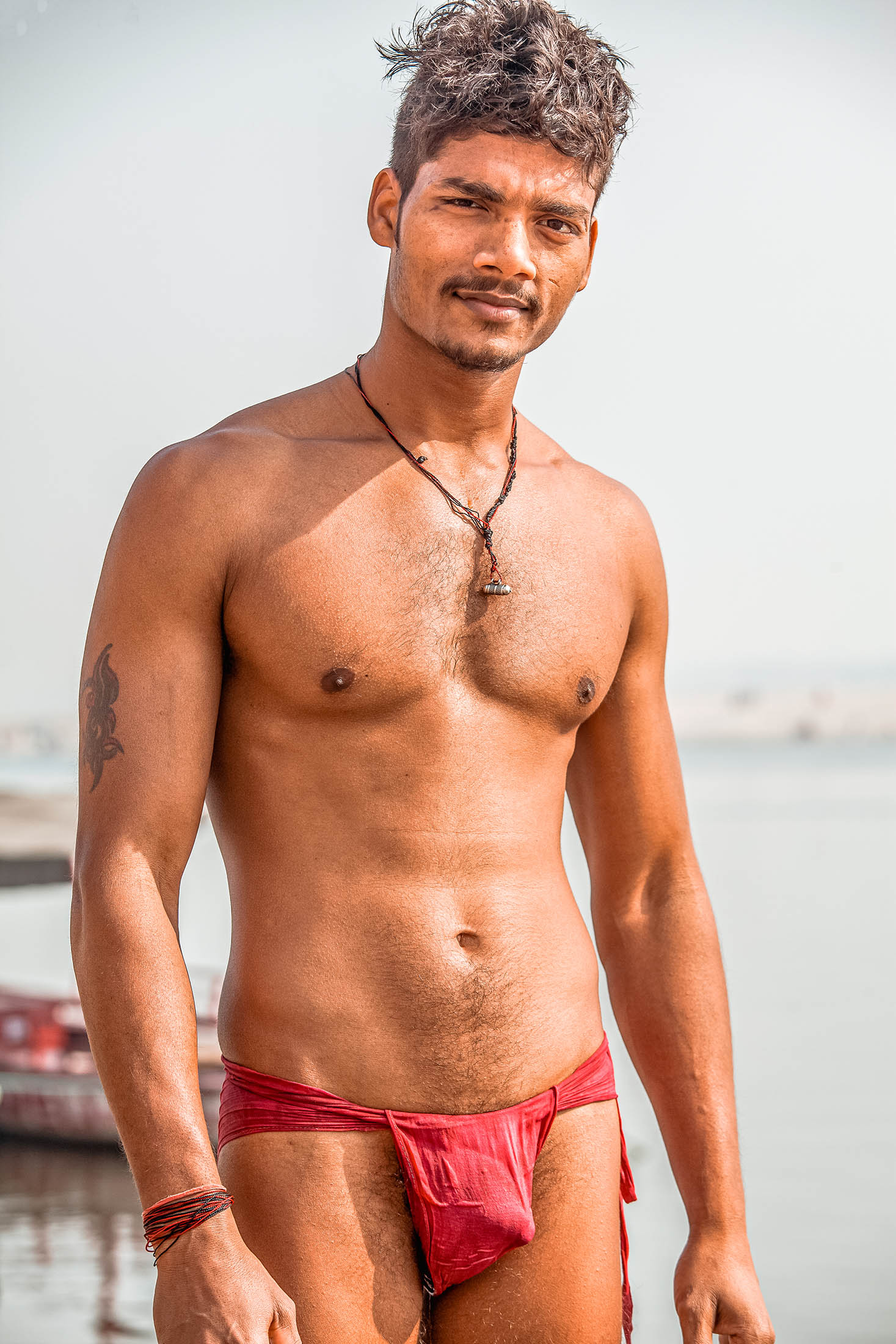
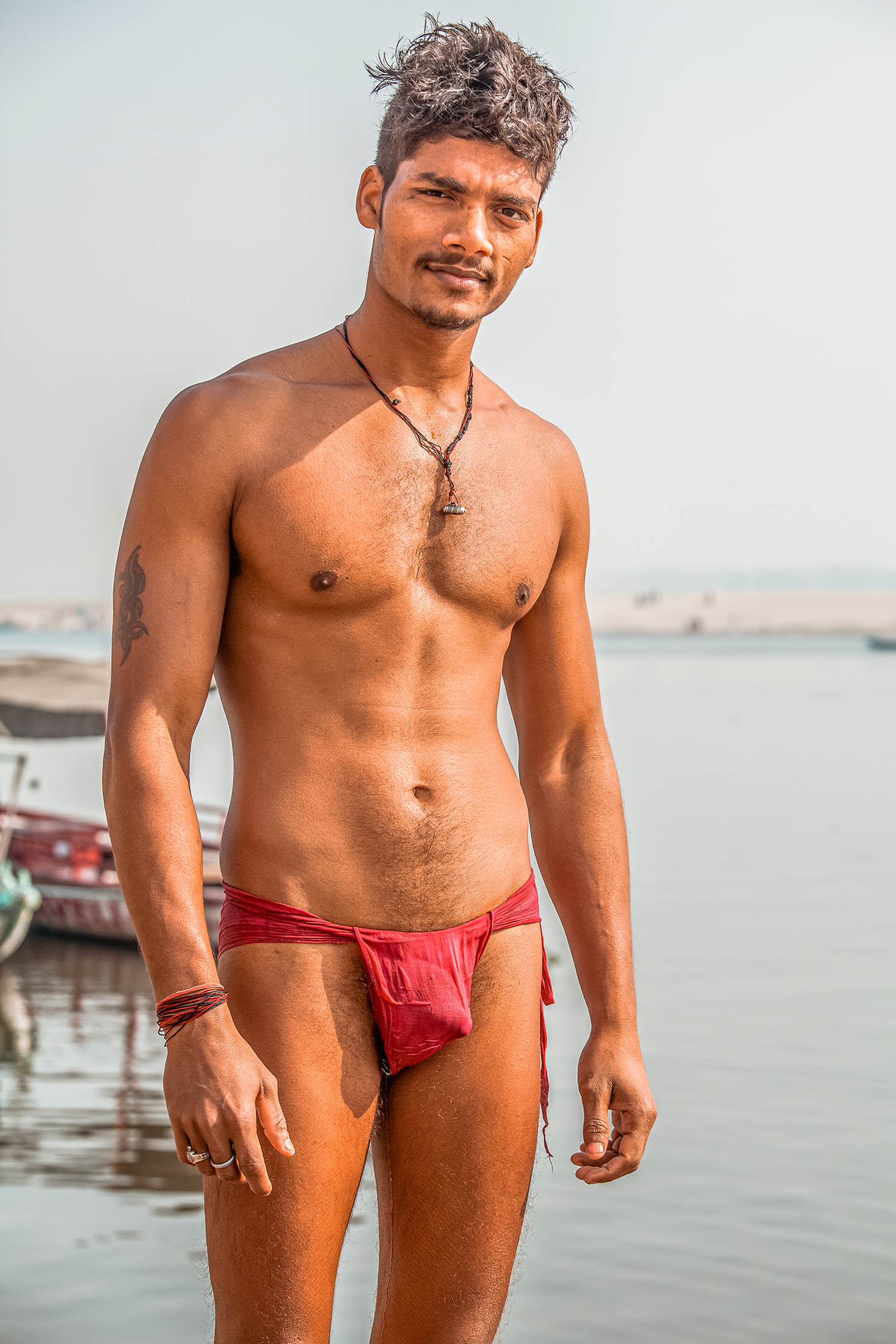
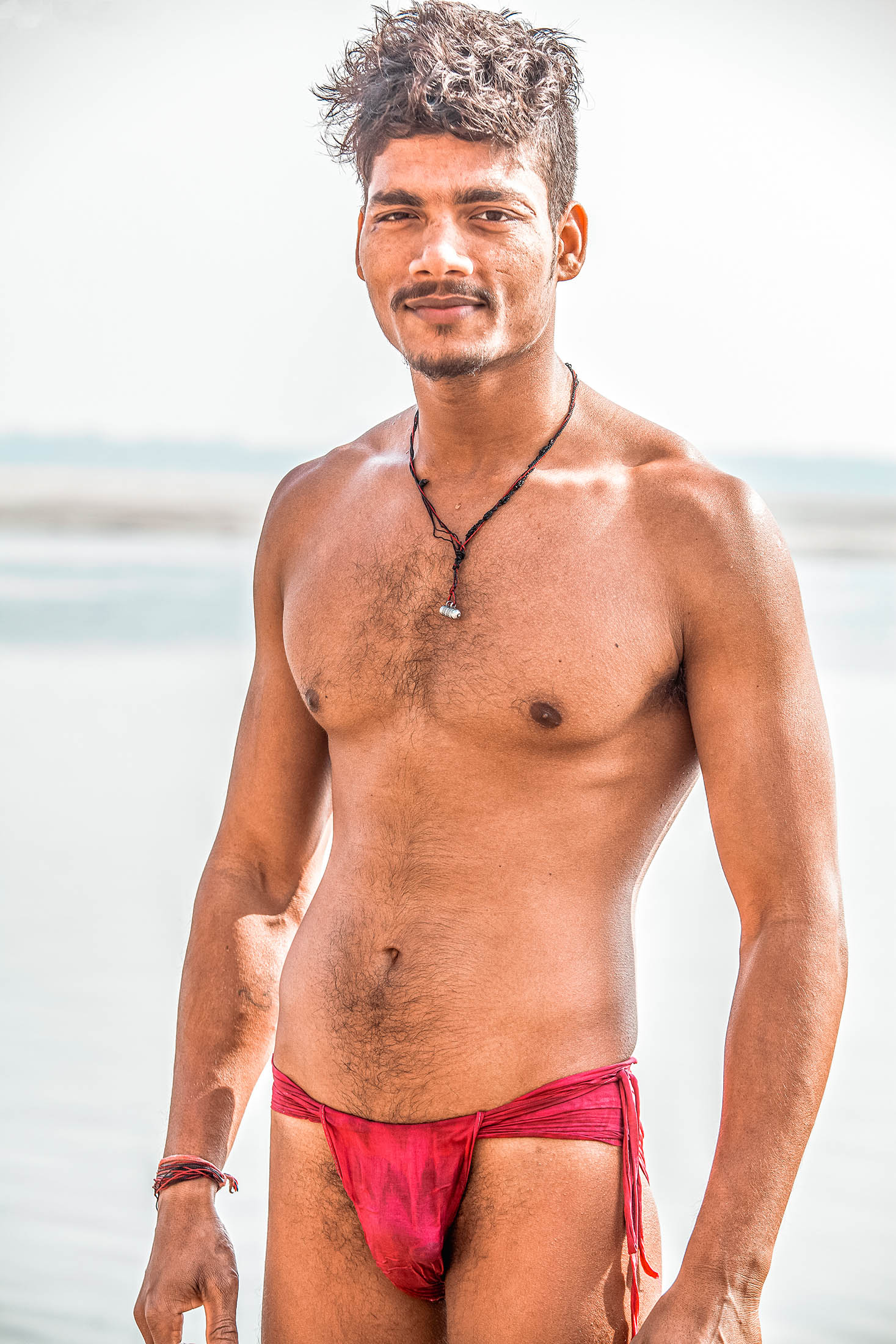
After a brief chat, he invites me to the Akhara in which he trains, to watch him practice.
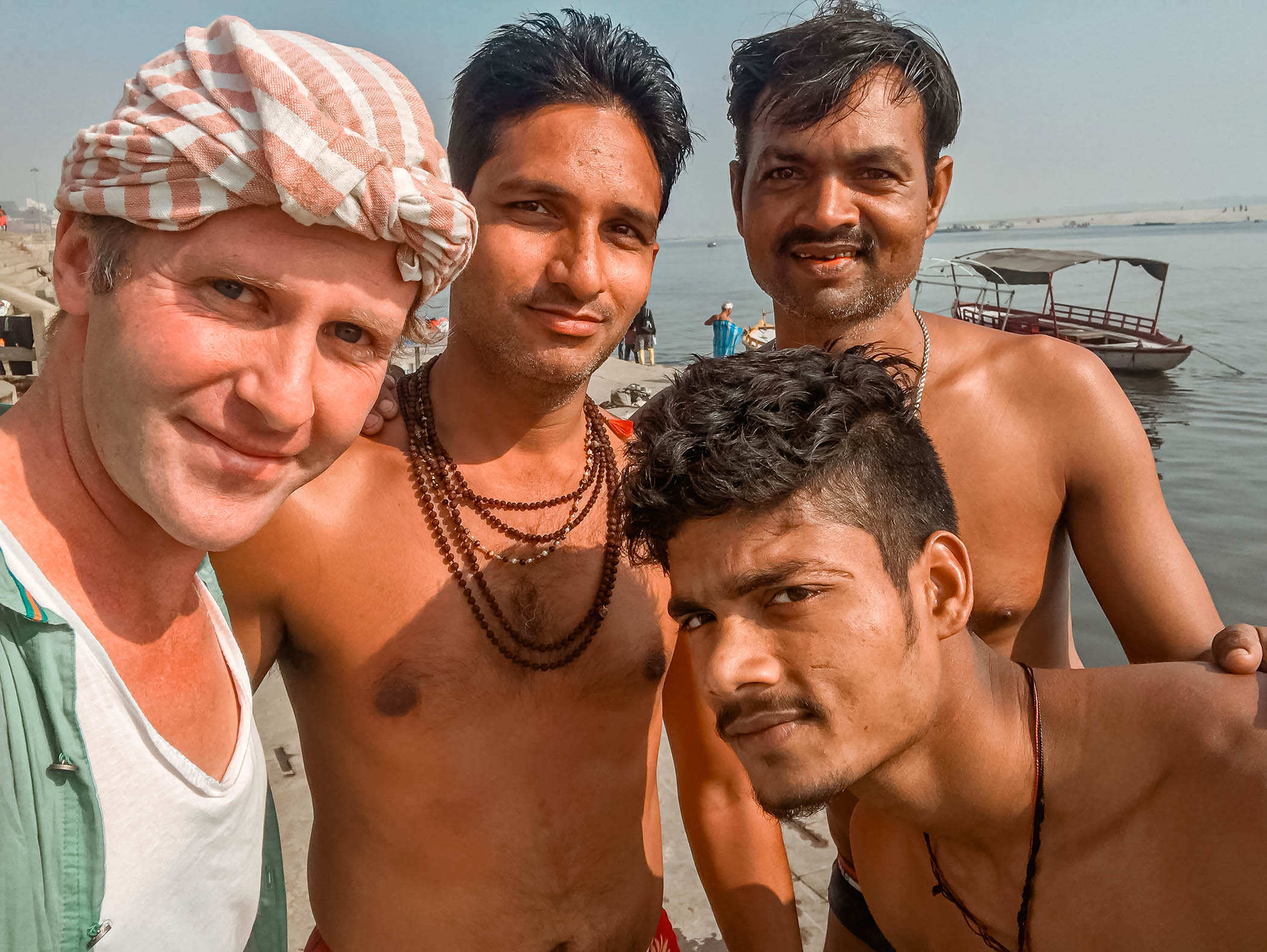
Later in the day, I make way for the Akhara, but he doesn't show up. Undeterred, I ask permission to enter. The sound of the wrestlers grunting and slapping against each other fills the air, as they train with intense focus and determination. The sight of their muscular bodies moving in unison is a testament to the power and beauty of the ancient sport.
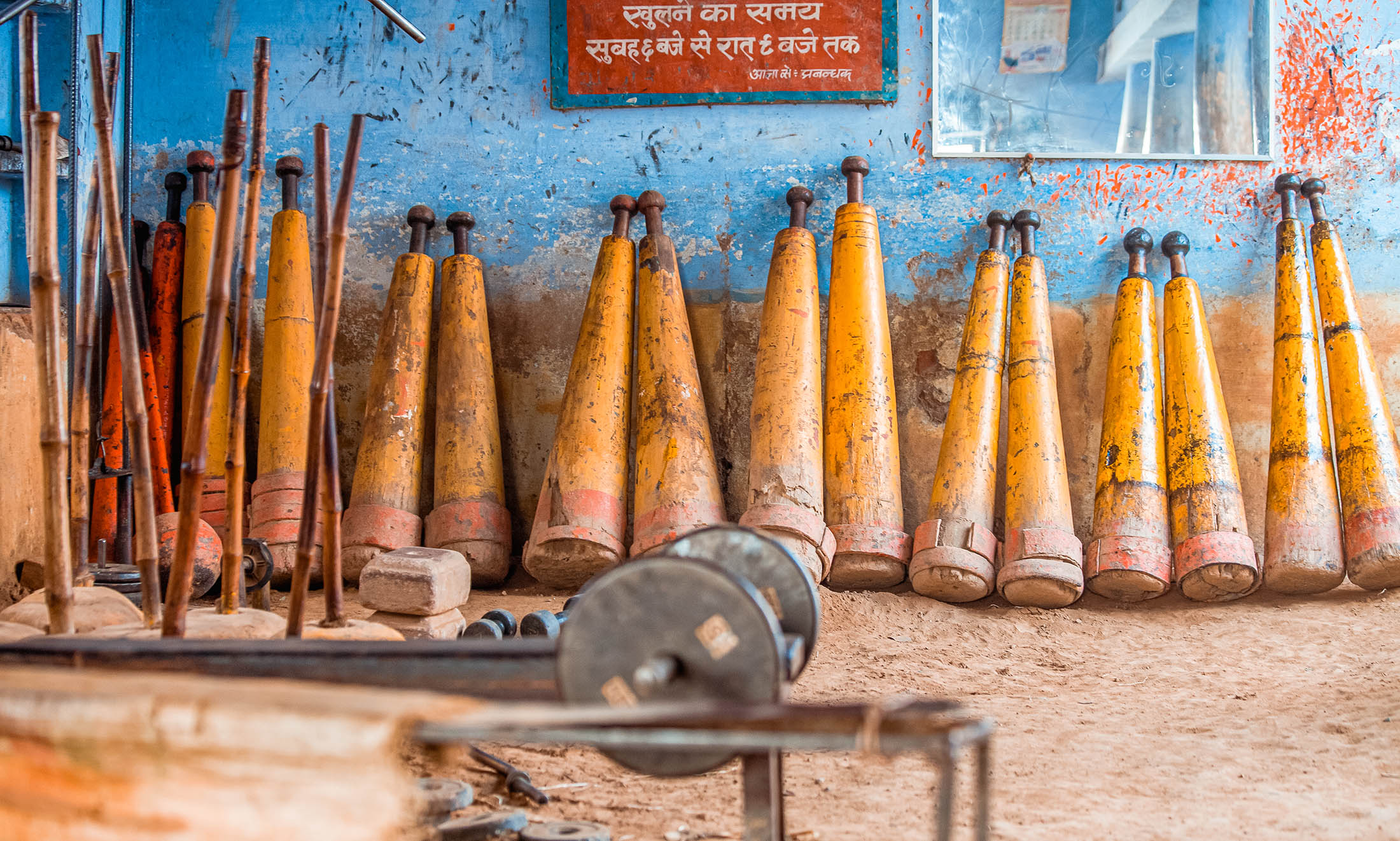
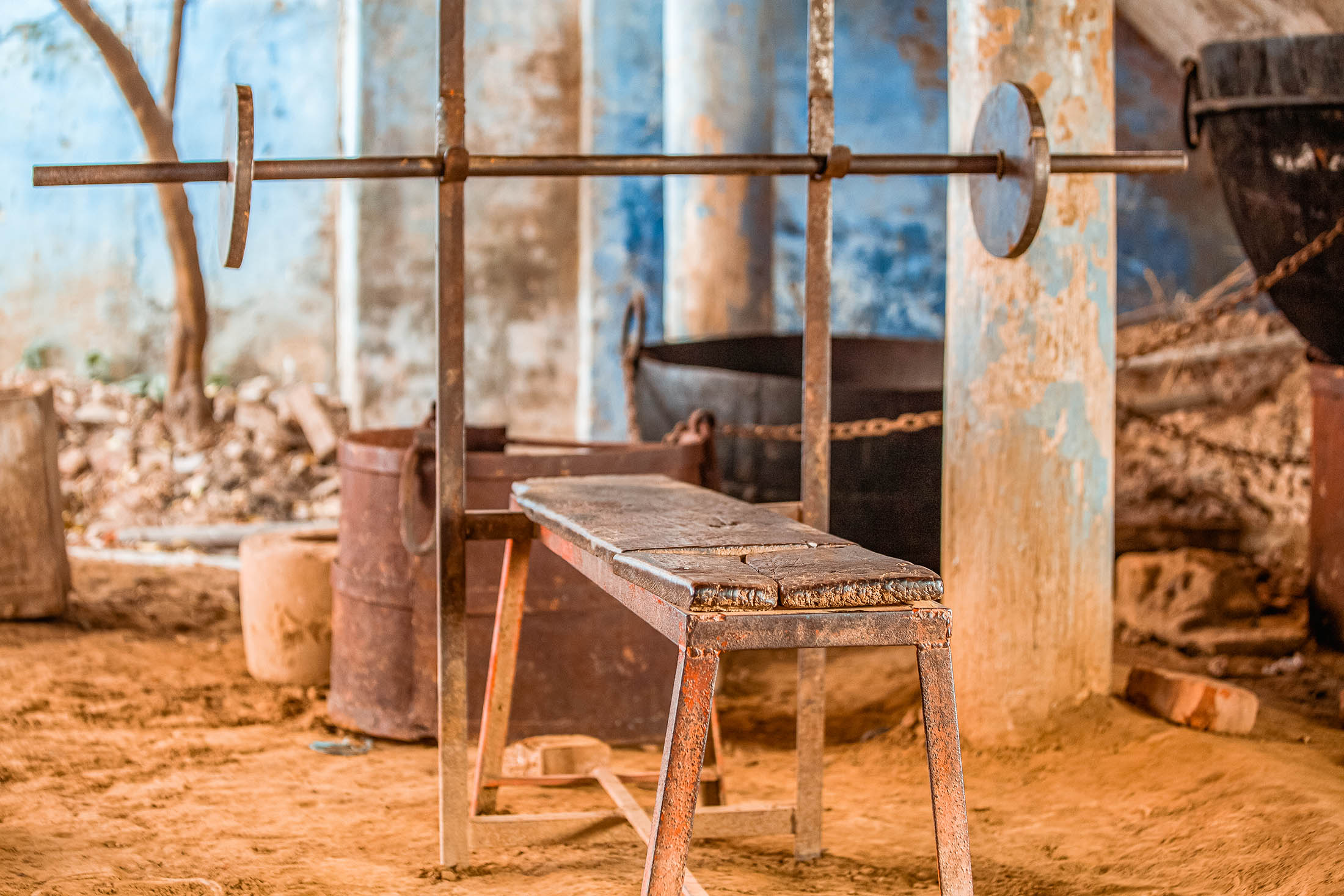
I snap some pictures of the training equipment and feel thankful for the chance encounter with the wrestler on the banks of the Ganges.
Akharas in Varanasi
Varanasi is another city that has a strong Kushti culture. Home to several Akharas (including Tulsi and Mauli), there are ample opportunities to watch wrestlers practice and compete.
Kushti in Mumbai
My Experience
As I turn up to the Akhara in the backstreets of Mumbai (a few blocks behind NM Joshi Marg Police Station), the noise from NM Joshi Marg fades away. A man standing outside, presumably a coach, invites me inside, and I'm struck by the simple, almost spartan surroundings.
I'm led into a communal bedroom, and several wrestlers are lounging around, some sleeping, others chatting quietly. I sense brotherhood, and they treat me with kindness, even though I'm a stranger. Cleanly washed loincloths are hanging around the room, and there's a subtle, earthy scent that's not unpleasant.
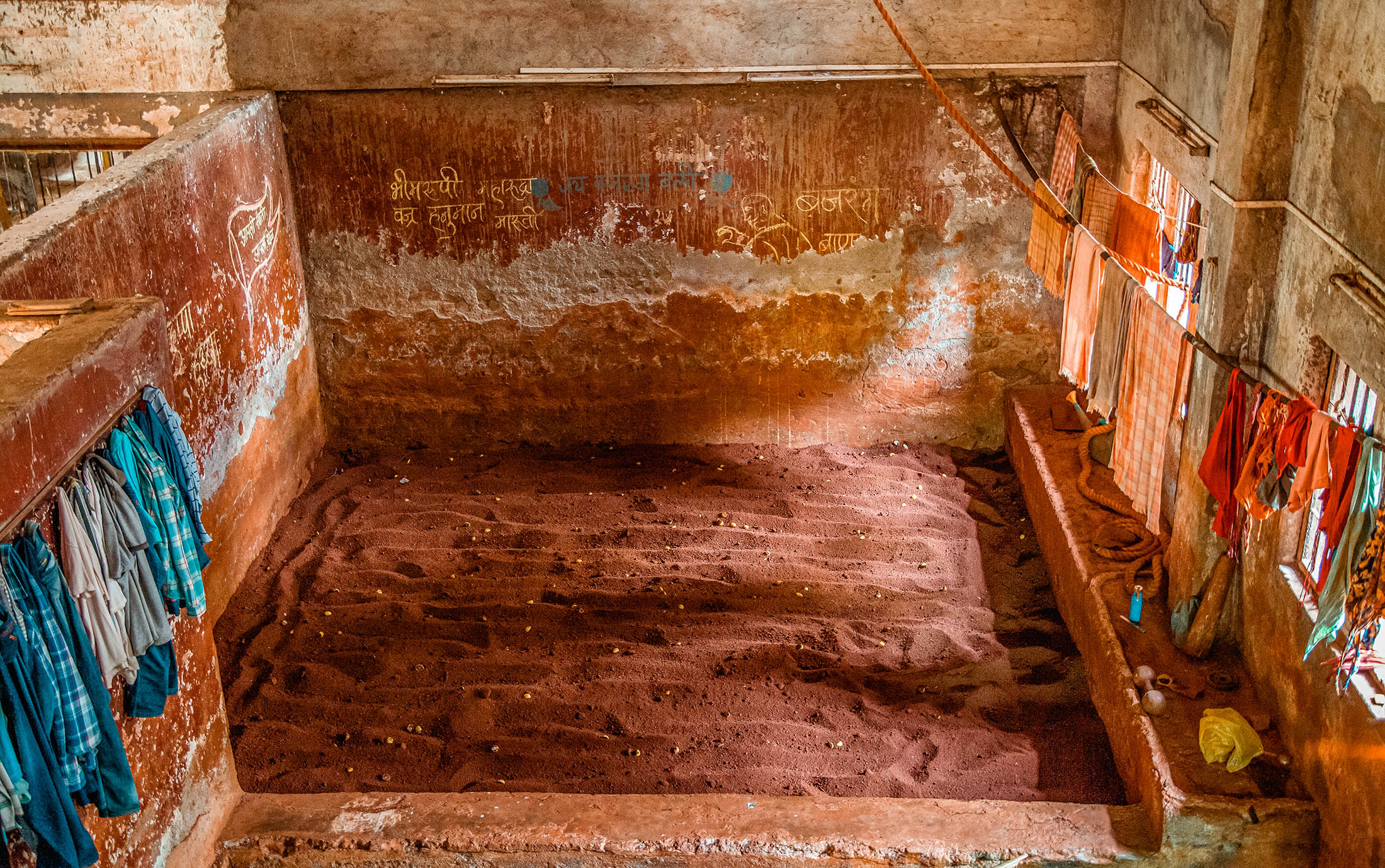
It's quiet, and I can hear the faint sound of people talking and laughing in the distance, presumably in other parts of the Akhara.
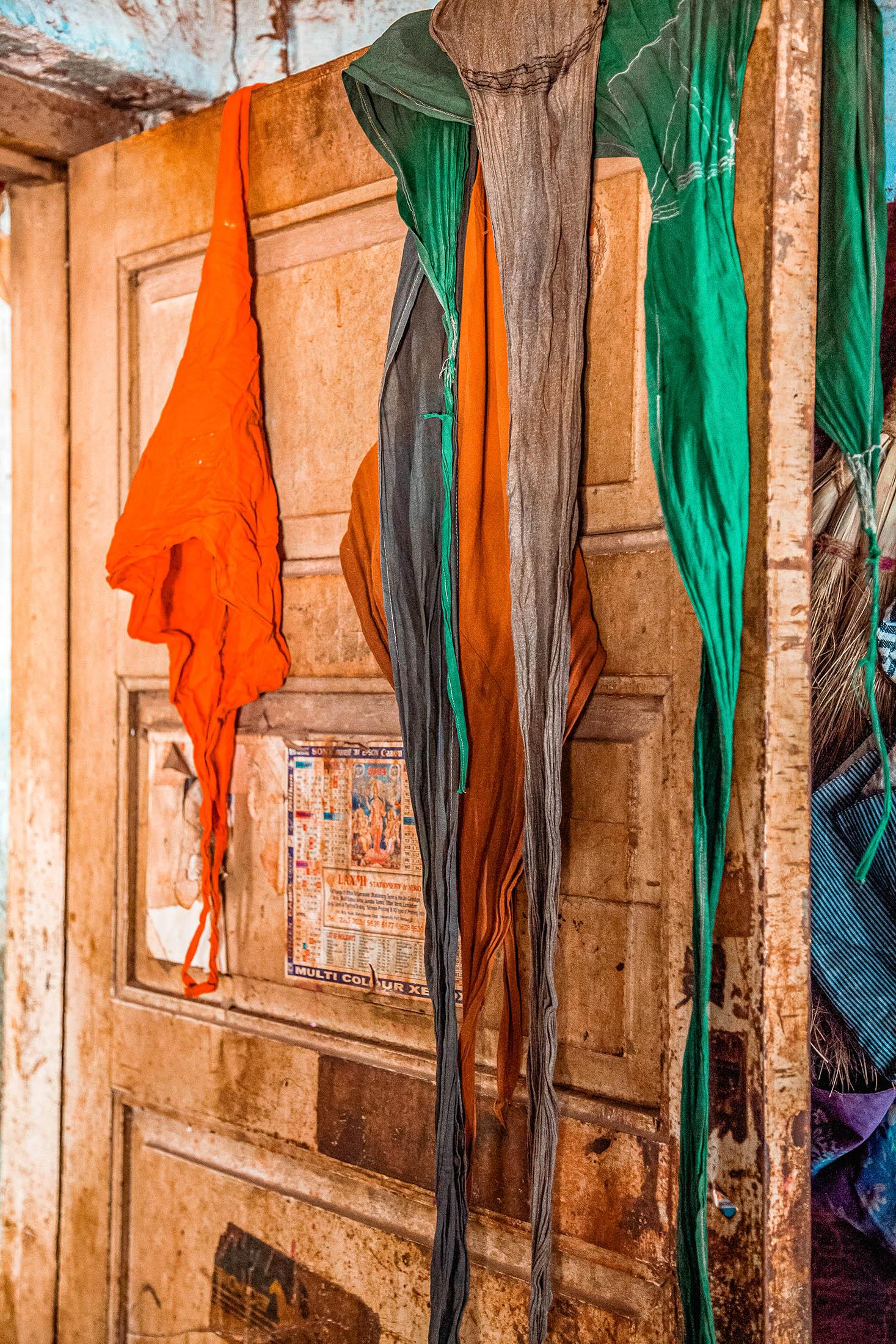
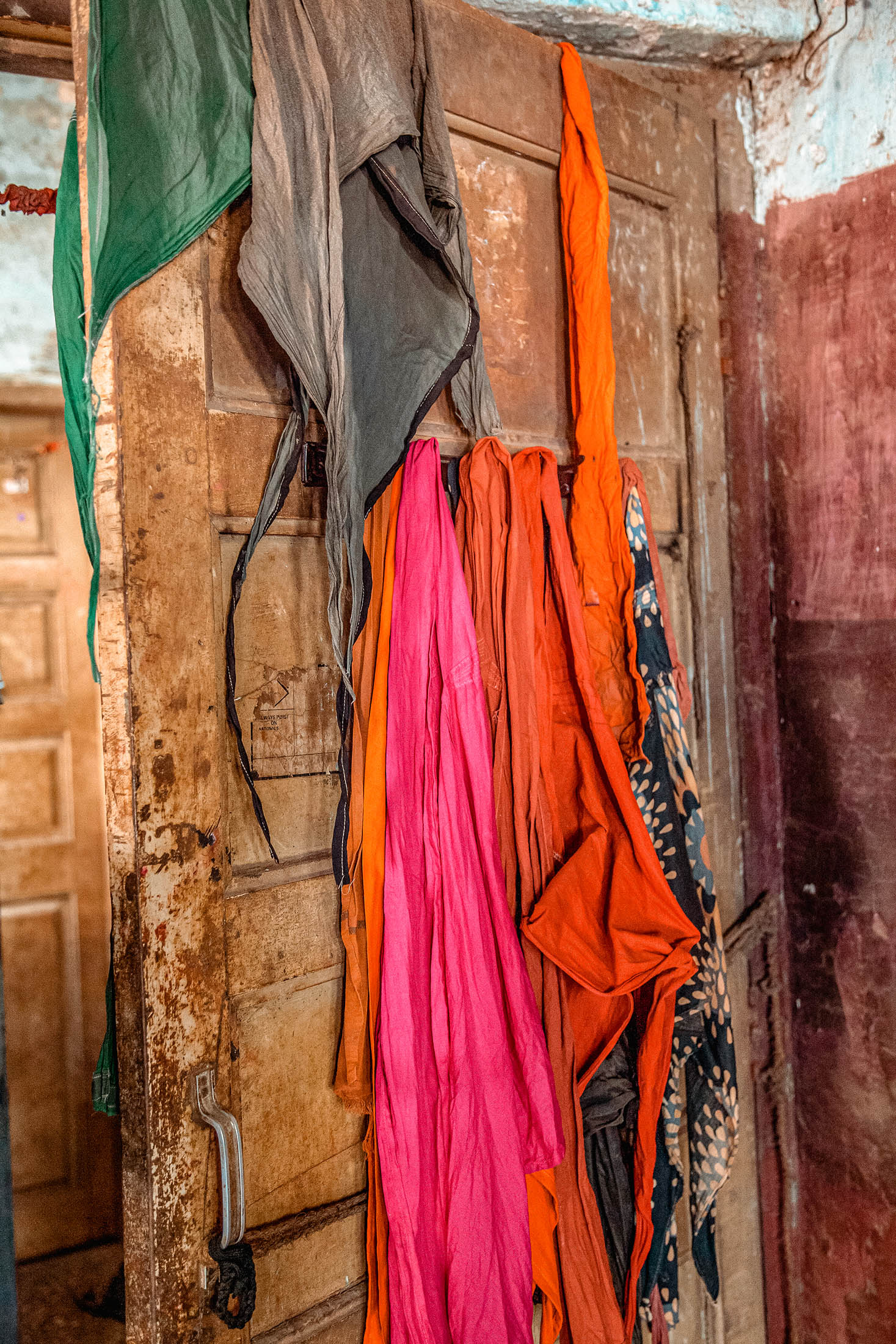
Nobody is currently practising - a brief period of rest during the middle of the day. But the sense of focus and discipline is palpable, even in this moment of reprieve.
Akharas in Mumbai
Mumbai (the commercial hub of India) is home to several Akharas, the famous Shivaji Park Akhara being the most popular, having produced world-class wrestler and Olympic medallist Sushil Kumar.
What’s Involved in Becoming a Kushti Wrestler?
Becoming a Kushti wrestler requires discipline, hard work, and dedication. There are no age requirements, but typically wrestlers start training at a young age. Physical training involves building strength, endurance, and flexibility through running, weightlifting, and practicing wrestling techniques.
Mental agility is essential, as wrestlers must be able to stay focused and persistent, particularly in the face of setbacks.
Cultural rules and traditions apply, such as showing respect for the guru and senior wrestlers, following rules for entering and exiting the Akhara, and adhering to dietary restrictions.
Kushti has traditionally been a male-dominated sport, but in recent years, some Akharas have opened their doors to females too.
Rules and Principles for Training in and Visiting an Akhara
There are a few things travellers should know before visiting an Akhara (or commencing a training program at one of them).
Visits and Training
- Respect the Rules and Traditions: Akharas are places of worship and should be treated with respect. Before entering an Akhara, remove your shoes and wash your feet. Dress modestly. Akharas have strict rules related to diet, hygiene, and discipline (mostly for wrestlers, which would apply to you if you were invited to stay and train).
- Obtain Permission: Speak to the head coach or administrator of the Akhara before entering to spectate or participate in any training programs. Some Akharas have specific hours for visitors, and they often require prior registration for training programs.
Training only
- Bring Appropriate Gear: If you plan to participate in training programs, bring appropriate gear, including a dhoti (a traditional Indian garment) and a gamchha (a cotton towel) to wrap around your waist. Bring also wrestling shoes or barefoot shoes for training.
- Start Slowly: Kushti is a physically demanding sport, and beginners should start slowly and gradually increase their training intensity. It's important to listen to the coaches – don’t push beyond your physical limits.
- Be Open to Learning: As Kushti is a traditional Indian sport, be open to learning about the culture and traditions associated with it. Be respectful of the coaches and other wrestlers and choose to learn from them.
- Maintain Hygiene: Akharas are communal spaces, and maintaining hygiene is important to prevent the spread of infections. Wash your hands regularly and keep the training area clean.
By following these tips, you can have a safe and enjoyable experience spectating and learning Kushti at an Akhara.
Where to Spectate and Learn Kushti
If you're interested in learning about Kushti (either by spectating as a one-off or by staying a while and training), then there's no better place to start than at an Akhara.
As mentioned, the sport requires discipline and dedication. So, if you want to train, consider if committing aligns with your circumstances.
Learning from experienced wrestlers is the best way to get started. Some Akharas offer training programs for beginners, but if you’re like me and have limited time, then opt to watch experienced wrestlers practice and compete.
The following Akharas have historically provided training programs for beginners:
- Hanuman Akhara, Delhi: It’s one of the oldest and most renowned Akharas in Delhi. They have a gym and a hostel facility for students.
- Chhatrasal Akhara, Delhi: The coaches provide personalised attention to each student. They also have a hostel facility.
- Tulsi Akhara, Varanasi: It’s one of the oldest in Varanasi, dating back to the 18th century. They offer training programs for beginners, with experienced wrestlers providing coaching and guidance.
- Mauli Akhara, Varanasi: Akin to those listed above, personalised service is provided and there’s a hostel facility for students.
- Shivaji Park Akhara, Mumbai: It’s one of the most popular Akharas in Mumbai, known for producing several world-class wrestlers.
Akharas require students to follow a strict code of conduct and a rigorous training routine. Be ready for early morning practice! But with dedication and hard work, according to Anuj (below), learning Kushti can be an incredibly rewarding experience.
Kushti Terms You Need to Know
Here are some essential Kushti terms you should know if you're interested in visiting and training in an Akhara.
Khula dangal: A public wrestling event that occurs in an open-air arena, where wrestlers from different Akharas compete against each other.
Kushti: Traditional form of Indian wrestling, also known as pehlwani, that involves grappling and holds, as well as conditioning exercises.
Pehlwani: An alternative term for Kushti wrestling, which originated in Persia and spread to India during the Mughal Empire.
Akhara: A wrestling gym or training centre, where Kushti wrestlers practice and train.
Mud pit: The traditional wrestling arena where Kushti wrestlers practice and compete. The pit is filled with clay and water to create a soft, slippery surface.
Malikhana: The weightlifting area in the Akhara, where wrestlers train.
Gada: A mace or heavy metal weight used to strengthen the upper body muscles and improve grip strength.
Loincloth or Langot: A piece of cloth that’s worn around the waist, (barely) covering buttocks and genitals.
Guru: A coach or mentor who teaches and trains Kushti wrestlers.
Jori: A pair of Kushti wrestlers who train together.
Pahlwan: A wrestler who has achieved a certain level of skill and expertise in Kushti. The term is also used as a sign of respect for wrestlers in general.
Baithak: A squatting exercise to build leg strength and improve grappling ability.
Dohbi: A technique in which a Kushti wrestler wraps his opponent's arms and legs with his own arms, immobilising the opponent and setting him up for a pin.
Kharaba: A technique in which a wrestler locks his opponent's arm behind his back, leaving him vulnerable to a pin.
Naki: The art of using one's nails to inflict pain and discomfort on an opponent during a Kushti match (aka dangal). It is only allowed in certain types of matches (and is considered controversial by some).
An Interview with Anuj, a Young Kushti Wrestler from Delhi
Kushti is not just a sport, it's a way of life. Anuj, a passionate young Indian man, shares with me his journey to becoming a Kushti wrestler. When I ask him about his motivation, he enthusiastically indicates, "My father encouraged me to start wrestling. He used to sneak out of the house at 2 am to train when he was young, and I wanted to follow in his footsteps."
Anuj's training routine includes jogging in the morning and practicing in the evening, but he believes rope climbing to be pivotal in increasing grip and strengthening the shoulders. He also emphasises the value of sapate (exercising the entire body with squats and push-ups), which helps in developing overall strength and stamina.
He admits that he has suffered numerous injuries, including dislocated fingers, bruised chest, and a cut lip. There have also been unfortunate langot slips in which the audience has seen more of him than needed. He believes that the injuries are part of the game, and they only make him stronger.
His mental preparation for a competition is impressive. He thinks about the hard work he has put in and feels a sense of responsibility in his heart. He states, "When I am in the ring, I am not only representing myself, but also my family, my Akhara, and my community."
When I ask about his goal in continuing to wrestle, he replies with pride, "I want to be a good mud wrestler one day and make my father proud." He also adds that Kushti is not just a sport for physical fitness, but it also connects him to his heritage and provides a sense of honour. He continues, "Playing Kushti makes me feel good. It's a heritage that I carry on with pride."
Anuj's story is an inspiration for anyone looking to embrace their cultural roots and honour their family traditions. He reminds us that being a good player is not just about weight or technique, but also respecting elders, listening to their advice and learning from them. Anuj's love for Kushti is infectious, his final words eloquently capturing the essence of the sport, "Kushti is not just a sport; it's a way of life that teaches you to be disciplined, humble, and respectful."
Ready to Learn Kushti?
Experiencing the sport of Kushti is an excellent way to immerse yourself in Indian culture. With its roots in ancient times and its popularity still strong today, Kushti is a sport that represents the strength, agility, and discipline of Indian people. Whether you're in Delhi, Varanasi, Mumbai, or Punjab (or elsewhere in India), there are plenty of opportunities to witness and experience this unique sport up close.
I can’t wait to return to immerse myself in training (a step up from spectating).
